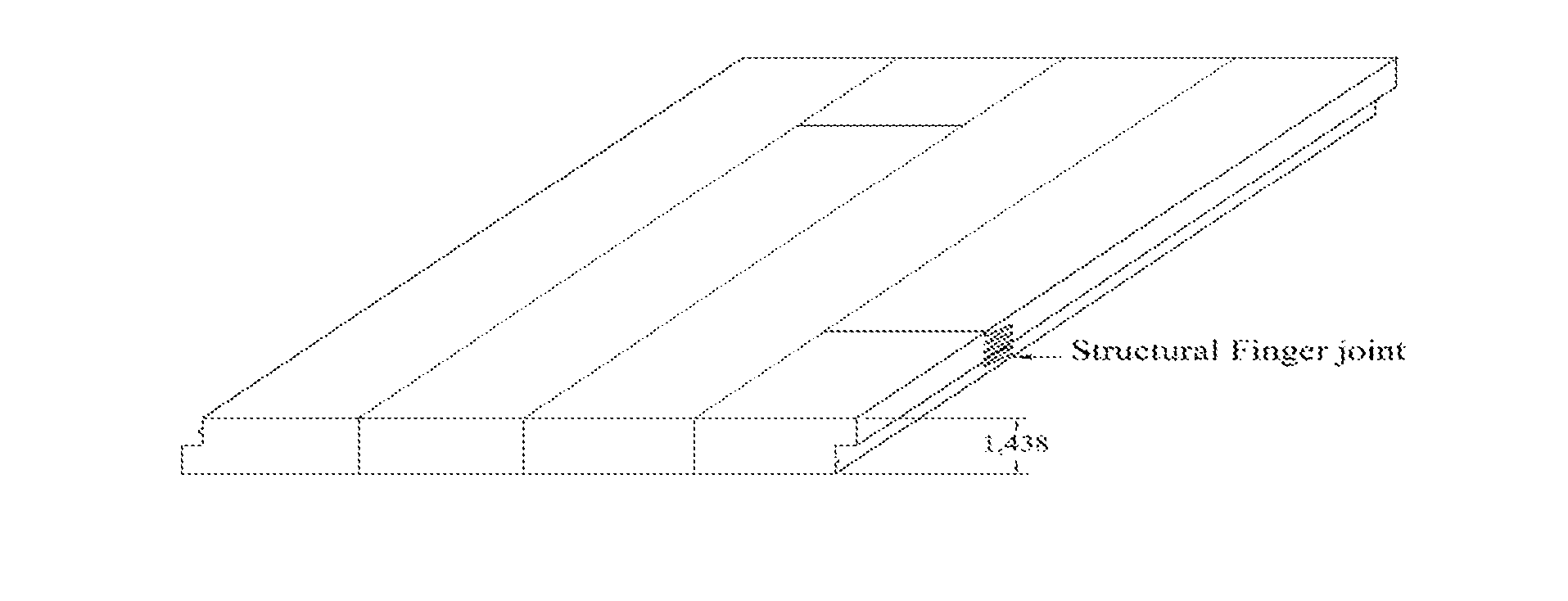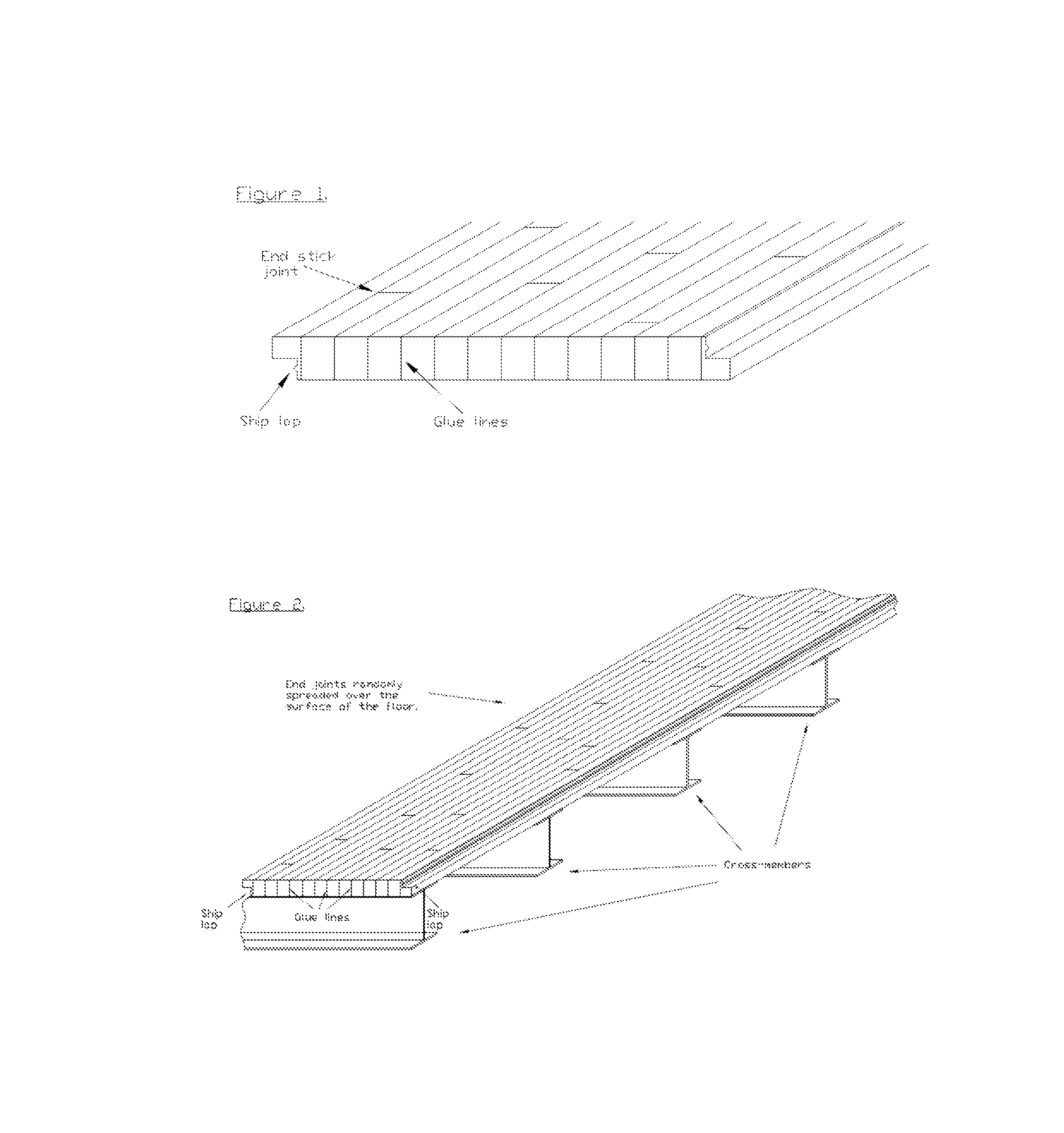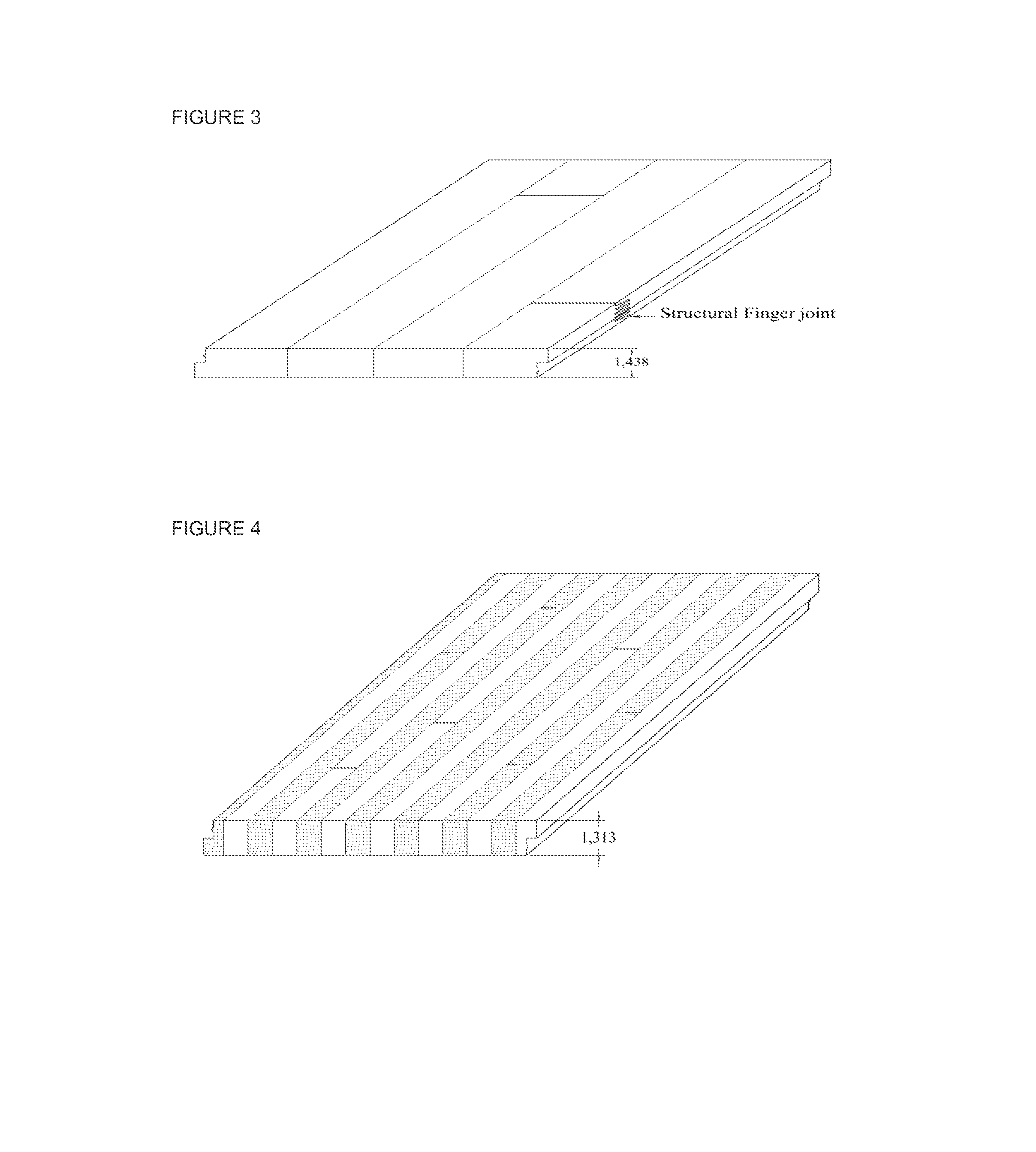Wooden laminated floor for the transport industry composed of softwood lumber
a technology of softwood lumber and laminated floors, which is applied in the direction of walls, superstructure sub-units, building components, etc., can solve the problems of relative cost and the majority of non-structural joints, and achieve the lowest manufacturing cost, increase durability, and strengthen the tension zone.
- Summary
- Abstract
- Description
- Claims
- Application Information
AI Technical Summary
Benefits of technology
Problems solved by technology
Method used
Image
Examples
Embodiment Construction
[0055]The starting point of the present invention is to use softwood species which have the closest (equal and even higher would be the best) modulus of elasticity (MOE) of the current laminated hardwoods floor. The MOE of a laminated hardwood floor is usually around between 1.8 to 2.0 million psi at 8% moisture content. The most common North American softwood reaching that level are mainly the Douglas-fir family species, the black spruce, the western larch and the yellow pine species. For maximum results on the mechanical properties of the finished product, machine graded lumber should be used. For example, if the minimum MOE is 1.8 million psi then M-23 under MEL group or 2100f-1.8E under MSR group must be used as raw material.
100% Softwood Laminated Floor
[0056]The first design which can be done is a laminated floor using only softwood lumber a portion of which is shown in FIG. 3. To reduce the manufacturing cost and optimize the uniformity of the mechanical value of the floor, it...
PUM
 Login to View More
Login to View More Abstract
Description
Claims
Application Information
 Login to View More
Login to View More - R&D
- Intellectual Property
- Life Sciences
- Materials
- Tech Scout
- Unparalleled Data Quality
- Higher Quality Content
- 60% Fewer Hallucinations
Browse by: Latest US Patents, China's latest patents, Technical Efficacy Thesaurus, Application Domain, Technology Topic, Popular Technical Reports.
© 2025 PatSnap. All rights reserved.Legal|Privacy policy|Modern Slavery Act Transparency Statement|Sitemap|About US| Contact US: help@patsnap.com



